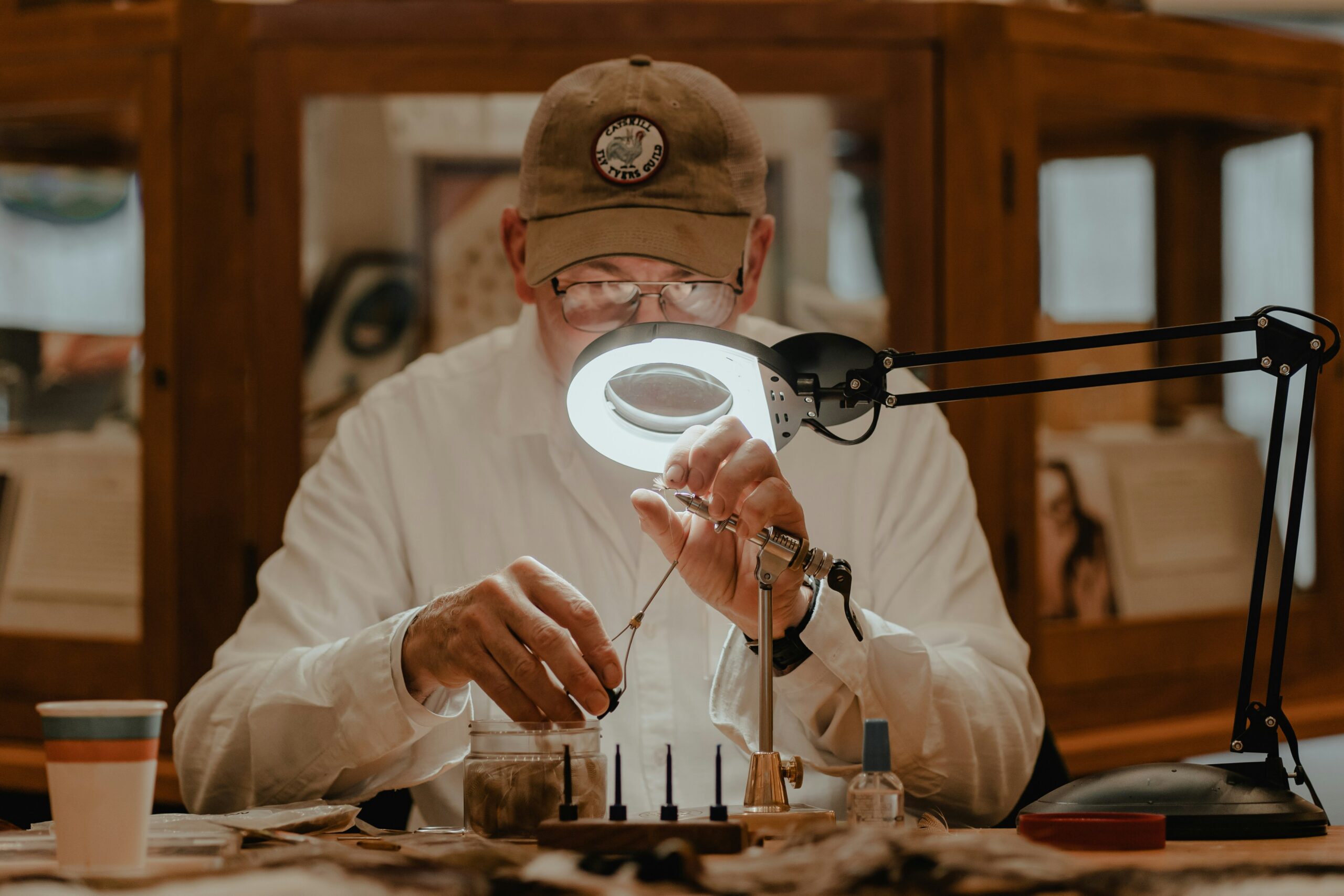Spotting scopes and binoculars are both popular optical tools used for observing distant objects. But have you ever wondered if spotting scopes have the same magnification capabilities as binoculars? Well, in this article, we will explore the differences between these two devices and determine if spotting scopes can deliver similar levels of magnification. So, get ready to uncover the fascinating world of spotting scopes and discover their true magnifying powers.

Understanding Magnification in Optical Devices
Definition of Magnification
Magnification refers to the process of enlarging an image or object, making it appear larger than its actual size. In optical devices such as binoculars and spotting scopes, magnification plays a crucial role in enhancing our ability to see distant objects with clarity and detail.
Roles of Magnification in Optical Devices
The primary role of magnification in optical devices is to bring distant objects closer and make them appear larger. This allows us to observe fine details that might otherwise be difficult to see with the naked eye. Whether you’re birdwatching, stargazing, or engaging in other outdoor activities, magnification provides an enhanced viewing experience by bringing the subject closer to you.
Range of Magnification in Different Devices
The range of magnification can vary significantly among different optical devices. Binoculars typically have a lower range of magnification, typically ranging from 8x to 12x. Spotting scopes, on the other hand, offer higher magnification options, often starting from 20x and going up to 60x or more. The choice of magnification range depends on the specific application and the user’s preferences.
Basics of Spotting Scopes
Definition of Spotting Scopes
Spotting scopes are compact, portable telescopes designed for terrestrial observation. They are often used in activities such as birdwatching, nature observation, hunting, and even surveillance. Spotting scopes offer higher magnification and superior image quality compared to binoculars, making them an excellent choice for long-range viewing.
Uses of Spotting Scopes
Spotting scopes have a wide range of applications. They are commonly used by birdwatchers to identify and observe birds in their natural habitats. Wildlife enthusiasts also rely on spotting scopes to observe and study animals from a safe distance. Hunters use spotting scopes to scout game from a distance or assess their trophy potential. Additionally, spotting scopes find utility in activities such as stargazing, target shooting, and even photography.
Key Components of a Spotting Scope
A spotting scope comprises several key components that work together to provide a clear and magnified image. The objective lens is responsible for capturing and focusing light onto the eyepiece. The eyepiece, which is interchangeable in most spotting scopes, determines the level of magnification. The body of the scope houses these components and often includes features such as focus knobs, zoom rings, and tripod mounts for stability.
Different Types of Spotting Scopes
Straight Spotting Scopes
Straight spotting scopes feature a straight barrel design, where the eyepiece and objective lens are aligned in a straight line. This design offers a more intuitive viewing experience as it allows for quick target acquisition. Straight spotting scopes are particularly suitable for viewing objects at eye level or slightly below, such as birds in trees or animals on the ground.
Angled Spotting Scopes
Angled spotting scopes have an angled barrel design, where the eyepiece is set at a 45-degree or 90-degree angle to the objective lens. This design provides greater versatility and comfort, allowing users to observe objects at different angles without straining their necks. Angled spotting scopes are highly preferred for activities that involve observing objects above or below eye level, such as stargazing or viewing birds in tall trees.
Differences and Benefits of Each Type
Both straight and angled spotting scopes have their advantages and are suited for different scenarios. Straight spotting scopes excel in scenarios where quick target acquisition and ease of use are crucial. They are also preferred for beginners due to their simplicity. Angled spotting scopes, on the other hand, provide greater flexibility in viewing various angles and are more comfortable for prolonged periods of use. The choice between the two types ultimately depends on the user’s preferences and specific application.
Understanding Magnification in Spotting Scopes
How Magnification Works in Spotting Scopes
Magnification in spotting scopes is achieved by the combination of the objective lens and eyepiece. The objective lens gathers light and brings the image into focus, while the eyepiece magnifies the focused image for observation. By adjusting the zoom or interchangeable eyepieces, the magnification level can be changed, allowing users to bring distant objects closer or observe a wider field of view.
Range of Magnification in Spotting Scopes
Spotting scopes offer a wide range of magnification options, typically starting from 20x and going up to 60x or even higher in some advanced models. A lower magnification of around 20x provides a wider field of view, making it easier to locate and track moving objects. Higher magnification, such as 60x, allows for detailed observations of distant subjects but narrows the field of view. The ideal magnification range depends on the specific activity, atmospheric conditions, and user preferences.
The Impact of Magnification on Image Quality in a Spotting Scope
While magnification plays a crucial role in bringing distant objects closer, it’s important to understand its impact on image quality. As the magnification level increases, the image may appear dimmer due to the limited amount of light entering the scope. Additionally, minor movements or vibrations become more pronounced at higher magnifications, making image stabilization essential. Selecting a spotting scope with a larger objective lens diameter can help improve image quality by allowing more light to enter the scope.

Basics of Binoculars
What are Binoculars?
Binoculars are handheld optical devices consisting of two telescopes aligned and mounted side by side. They are designed to provide a three-dimensional view of distant objects and are widely used for various recreational and professional activities. Binoculars offer a balanced combination of portability, ease of use, and magnification capabilities.
Uses of Binoculars
Binoculars have a broad range of applications, making them a versatile tool for outdoor enthusiasts and professionals alike. They are widely used in activities such as birdwatching, wildlife observation, sporting events, hiking, boating, and even astronomy. Binoculars are also invaluable for travelers, allowing them to enjoy breathtaking views and landmarks in stunning detail.
Key Components of Binoculars
Binoculars consist of several key components that work together to provide a clear and magnified view. The objective lenses are responsible for gathering light and directing it to the eyepieces. The eyepieces magnify the focused image, allowing for comfortable viewing. The central focusing mechanism enables users to adjust the focus of both lenses simultaneously, while the interpupillary distance adjustment allows for proper alignment of the eyepieces with the user’s eyes.
Different Types of Binoculars
Standard Binoculars
Standard binoculars are the most common and widely used type of binoculars. They typically have a magnification range of 8x to 12x, providing a good balance between magnification and a wide field of view. Standard binoculars are suitable for general observations, such as birdwatching, sports events, and nature walks. They offer a portable and user-friendly solution for those seeking versatile optical devices.
Compact Binoculars
Compact binoculars are a smaller and more lightweight alternative to standard binoculars. They are designed for maximum portability, making them ideal for activities that require minimal equipment and quick accessibility. Compact binoculars often have a lower magnification range of around 6x to 8x, sacrificing some magnification power for increased portability. They are popular among travelers, hikers, and concert-goers.
Wide-Angle Binoculars
Wide-angle binoculars, as the name suggests, offer an expanded field of view compared to standard binoculars. They typically have a magnification range similar to standard binoculars but provide a wider perspective, allowing users to capture more of the scene without sacrificing image quality. Wide-angle binoculars are beneficial for activities such as landscape viewing, boating, and architectural observation where a broad field of view is desired.

Understanding Magnification in Binoculars
How Magnification Works in Binoculars
The working principle of magnification in binoculars is similar to that of spotting scopes. The objective lenses gather and focus light, while the eyepieces magnify the focused image for observation. By adjusting the focus and interpupillary distance, users can achieve the desired magnification level and comfortably view distant objects with enhanced detail.
Range of Magnification in Binoculars
Binoculars typically offer a range of magnification options, depending on the model and intended use. The most common magnification range for standard binoculars is between 8x and 12x, although some specialized models may offer higher magnification options. Compact binoculars generally have a slightly lower range, ranging from 6x to 8x, to prioritize portability and ease of use. The choice of magnification depends on factors such as the distance of the objects to be observed and the stability of the user’s hands.
The Impact of Magnification on Image Quality in Binoculars
As with spotting scopes, the choice of magnification in binoculars can significantly affect image quality. Higher magnification levels may result in a narrower field of view, making it harder to locate and track fast-moving objects. Furthermore, the image may appear dimmer at higher magnifications due to the restricted amount of light entering the binoculars. It is important to strike a balance between magnification and image quality based on the specific requirements of the activity.
Comparing the Magnification of Spotting Scopes and Binoculars
Comparison of Magnification Range
When comparing the magnification range of spotting scopes and binoculars, spotting scopes generally offer higher maximum magnification options. Spotting scopes often start from 20x and can surpass 60x, depending on the model. In contrast, binoculars typically have a maximum magnification range of 8x to 12x. However, it’s essential to consider that binoculars provide a broader field of view compared to spotting scopes, allowing for easier object location and tracking.
Comparison of Image Quality at Higher Magnification
While spotting scopes offer higher magnification levels, image quality can be more challenging to maintain at those extremes. At higher magnification levels, atmospheric conditions, such as heat shimmer, can significantly degrade the image quality in spotting scopes. Binoculars, with their lower magnification range, are less affected by such conditions, resulting in better overall image quality. However, if image detail and close-up observation are the primary goals, spotting scopes with higher magnification options offer an advantage.
Comparison of Use Cases Based on Magnification
The choice between spotting scopes and binoculars ultimately depends on the specific use case and personal preferences. Spotting scopes excel in activities that require higher magnification, such as birdwatching, astronomy, and long-range observations. Binoculars, on the other hand, are well-suited for general observations, ranging from birdwatching to sporting events, due to their wider field of view and ease of use. Assessing your needs and balancing magnification requirements with other factors will help determine the ideal choice for your specific use.
Choosing Between Spotting Scopes and Binoculars
Factors to Consider when Choosing
When deciding between spotting scopes and binoculars, there are several important factors to consider. The intended use, portability requirements, and budget are some of the key considerations. Spotting scopes, with their higher magnification capabilities, are ideal for activities that require detailed observations and long-range viewing. Binoculars, on the other hand, offer a more versatile and portable solution without compromising image quality for general observations.
Understanding Your Magnification Needs
Determining your magnification needs is crucial in choosing the right optical device. Consider the specific objects or subjects you intend to observe and the desired level of detail. If you need to observe distant birds or wildlife with fine details, a spotting scope with higher magnification may be your best choice. For general observations, such as birdwatching or sports events, binoculars with a moderate magnification range offer a good balance between image clarity and wider field of view.
The Effects of Your Environment on Device Choice
The environment in which you will be using the optical device also plays a role in the decision-making process. If you anticipate observing subjects in various angles or heights, an angled spotting scope or wide-angle binoculars offer greater versatility and comfort. In situations where quick target acquisition or following fast-moving objects is crucial, a straight spotting scope or standard binoculars may be more suitable. Understanding the demands of your environment and the specific activities you engage in will help guide you towards the most appropriate choice.
Caring for Your Spotting Scope or Binoculars
Cleaning and Maintenance Tips
Proper cleaning and maintenance are essential for preserving the performance and longevity of your optical device. Use a soft, lint-free cloth to wipe away dust and debris from the lenses, body, and any accessories. Avoid using harsh chemicals or abrasive materials that can damage the lens coatings. Keep the device stored in a protective case or bag when not in use to prevent scratches and accidental damage.
Proper Storage to Maintain Magnification Quality
Storing your spotting scope or binoculars correctly is crucial for maintaining their magnification quality. Store them in a cool, dry place away from extreme temperatures and humidity. Avoid exposing the lenses to direct sunlight for prolonged periods, as this can cause thermal expansion and damage the optics. Additionally, consider investing in desiccant packs or moisture-absorbing products to prevent moisture from accumulating inside the optical device.
Repairing and Replacing Lenses or Other Parts
In the event of damage or wear, it is important to seek professional repair or replacement services for your spotting scope or binoculars. Attempting to repair or replace lenses or other parts yourself can cause further damage and compromise the device’s functionality. Contact the manufacturer or a reputable optical service provider for assistance, and ensure that genuine replacement parts are used to maintain optimal performance.
In conclusion, understanding magnification in optical devices such as spotting scopes and binoculars is key to choosing the right device for your specific needs. Whether you require higher magnification for detailed observations or a wider field of view for general observations, both spotting scopes and binoculars offer their unique advantages. By considering factors such as environment, use cases, and maintenance, you can confidently select the ideal optical device to enhance your outdoor experiences. Remember to care for your device properly to maintain its magnification quality and maximize its lifespan. Happy exploring!
